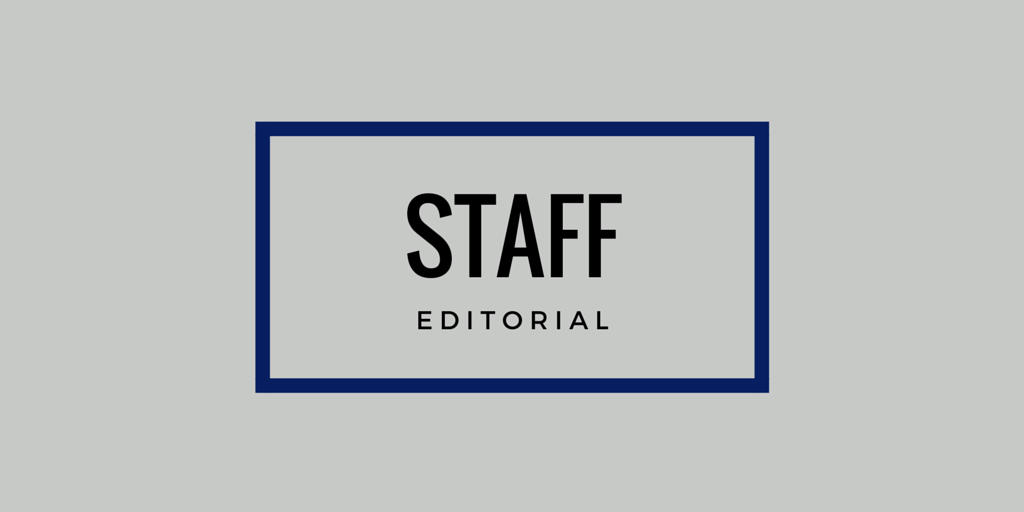Staff Ed: The student newspaper print edition is an indispensable component of the UMW campus community
6 min read
Lauren Brumfield | The Blue & Gray Press
By THE BLUE AND GRAY PRESS EDITORIAL STAFF
The Blue and Gray Press is the only remaining physical student publication at UMW, and the print edition fills an important role in the liberal arts aspect of UMW’s culture.
First, the paper brings together students from all disciplines for valuable experiential learning and community engagement opportunities. For many students, it is their only opportunity to see their name in print, and to express their opinions and engage with the campus community through the print medium.
“I feel that the print edition of the Blue and Gray Press is extremely valuable to the students who create it. Having a physical edition printed each week gives us something tangible with which we can appreciate our hard work, and it gives us a way to promote the paper to the UMW community,” said senior writer and English and literary studies major Hannah Galeone. “As writers, we want nothing but to have our voices heard and appreciated and the Blue and Gray gives us that ability. Reducing the student newspaper to just an online edition would seriously detract from our ability to promote our work and be effective journalists.”
We recognize that in today’s media, it is imperative for newspapers to offer a digital platform, which is why we’ve continued to maintain and expand our online presence. However, we have also observed that most of the people that engage with the paper online via social media are alumni and parents.
Meanwhile, we also know hundreds of current and prospective students—who are our main target audience—pick up papers during the week. Papers are more visible as all students that go to class, eat, study or workout on campus pass newsstands every day. Those that wish to read online have to actively search for articles or follow us on social media and are therefore more likely to miss out on articles they would otherwise be interested in, amongst the several print-exclusive aspects to the paper such as photo stories, the police beat and the sports scoreboard.
Sophomore Alexander Lee says he reads the paper every week just shortly after it arrives and hasn’t missed a single edition since coming to the university. “It’s just a part of my weekly routine at this point, and it’s become especially important for me as a relatively high-ranking SGA representative because it gives me a way of keeping up to date with the events that I might not hear about otherwise.”
Lee continued, “I feel that the value given to the student body through the print distribution is more than enough to justify that cost… The point is, even if readers make up a minority of the student body, a student newspaper is the best resource available for documenting student life and having a print edition is an important part of maintaining accessibility.”
Students aren’t the only ones picking up papers; faculty also recognize their value. HCC Building Manager and Adjunct Instructor Cartland Burge reads the paper every week.
“I’m a big fan… I get very excited every Thursday when the papers are delivered, just ask my student staff.” Even the digital guru understands the importance of print. “I like the print format because it keeps the articles in context with the time. When an article pops up online, sometimes it is weeks or months old, and just coming to my notice through social media or some other internet algorithm with its own nefarious purpose. When I pick up the paper, I know these are all things UMW students are thinking about right now, which is helpful in understanding what issues are currently on people’s minds.”
Political science professor, and Journalism Advisory Committee member, Dr. Stephen Farnsworth also reads the paper every week and advocates for the print-edition on campus. “As with any media outlet people look at different channels. Some people pick up the paper others go online. And to offer only one of those avenues is a bad idea,” said the former daily journalist. “The hard copy of the newspaper is one of the ways visitors learn about Mary Washington. When prospective students and parents make their way across campus, some of them are going to be picking up copies of the paper.”
Aside from public demand, there are also higher standards for newspapers in print media, and with that writers have greater expectations to uphold.
“Getting rid of the print edition would only make quality much worse. Writing for an online platform creates a much different tone and attitude. Writing to get clicks deteriorates the quality of an article. Writing for print doesn’t lead to any of that compromise. When I know my name is physically printed to something, I work harder to make that story matter,” says UMW alumnus Chris Markham, who served as the Editor-in-Chief of the paper from 2015-17 for two of his four-years of involvement. “If I can take my name off of something with one click, that sense of urgency to produce quality work is gone.”
Since the program previously funded by SGA that provided The New York Times and the Washington Post for free on campus was cut due to budget constraints in 2017, the Blue and Gray is the only newspaper on campus, and therefore the only source of print news available to students on campus.
Not only is the motivation—and quality—of the paper jeopardized with the depletion of the print edition, not having a print edition would put UMW behind nearly every other public university in Virginia, which have weekly or even daily student newspapers, often in addition to other print publications like magazines.
Markham, who recalls his years working with the Blue and Gray Press as “a cornerstone” of his UMW experience, says his work on the newspaper was part of the curriculum for his journalism major, only furthering the argument that the print edition offers much more than simple stories. “The lack of courses directed towards journalism and communication offered at UMW makes the importance of a student-run newspaper all the more critical. My experience on the paper landed me the job I have now; not the classes I took or the grades I got.”
In terms of sustainability, newspapers are traditionally the largest component by weight and volume of curbside recycling programs. Newspapers generate 8.8 million tons of waste, and in turn, 7.74 million tons of those tons are recycled, an 88.0% recovery rate.
Just this past summer, the school claimed that cutting the paper would be environmentally beneficial to the university. The University of Mary Washington stated in a Facebook post that, “UMW believes in freedom of the press and in stewardship of the environment,” which noted that the newspaper continues to operate online. Comments expressing concern and anger from both alumni and school faculty and staff soon flooded the post; one alumnus argued that if the school’s concern is saving paper, they should stop sending promotional materials that solicit donations through the mail.
It should also be acknowledged that the school sends promotional material to prospective students that eventually get thrown away—why don’t they settle for only email?
Because print is effective.
We at the Blue and Gray appreciate the readers, journalists and political advocates that fight for freedom of the press. Now more than ever, the public should support the journalists who write and report to enact change in their communities, the nation and even the world; the same journalists who push back against fake news media outlets that easily creep their way onto the internet and into mainstream digital media. Our purpose is to inform, to report the truth, to bear witness to suffering and to provide a reliable platform that represents the voices of any and all people.
This staff editorial was led by Grace Winfield.


